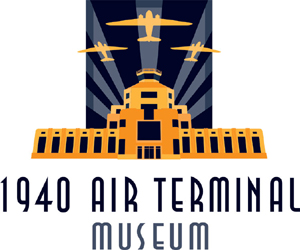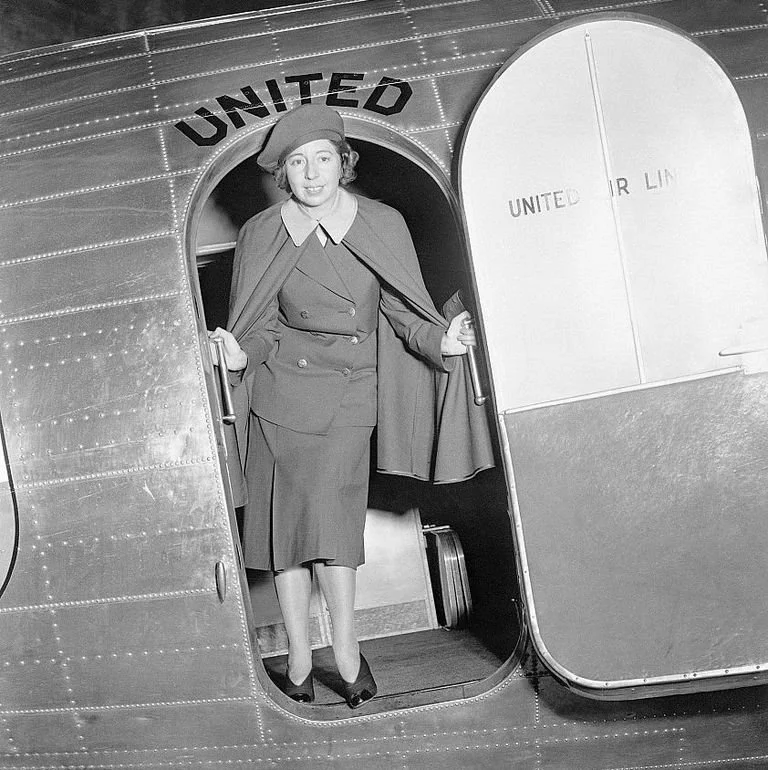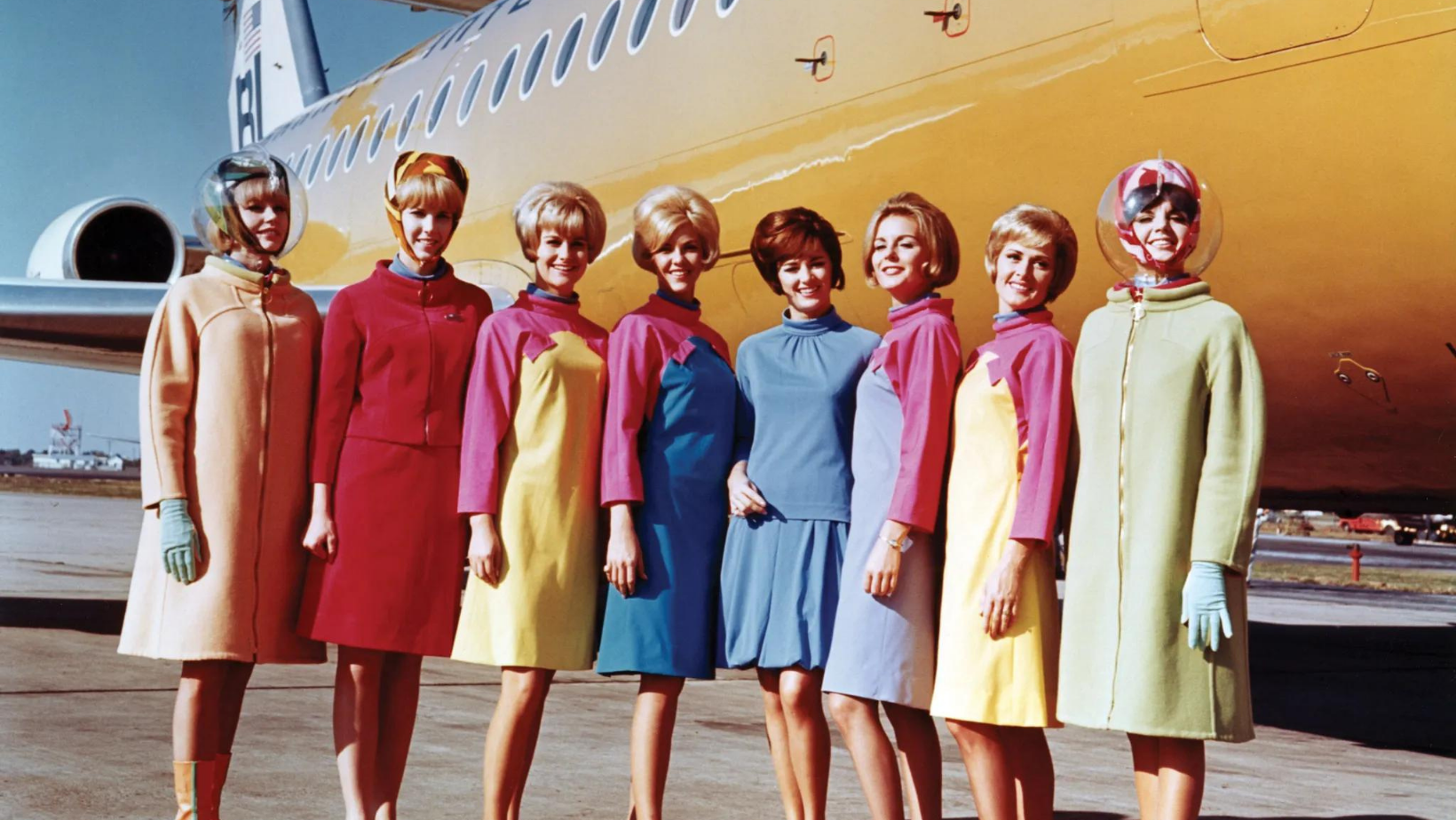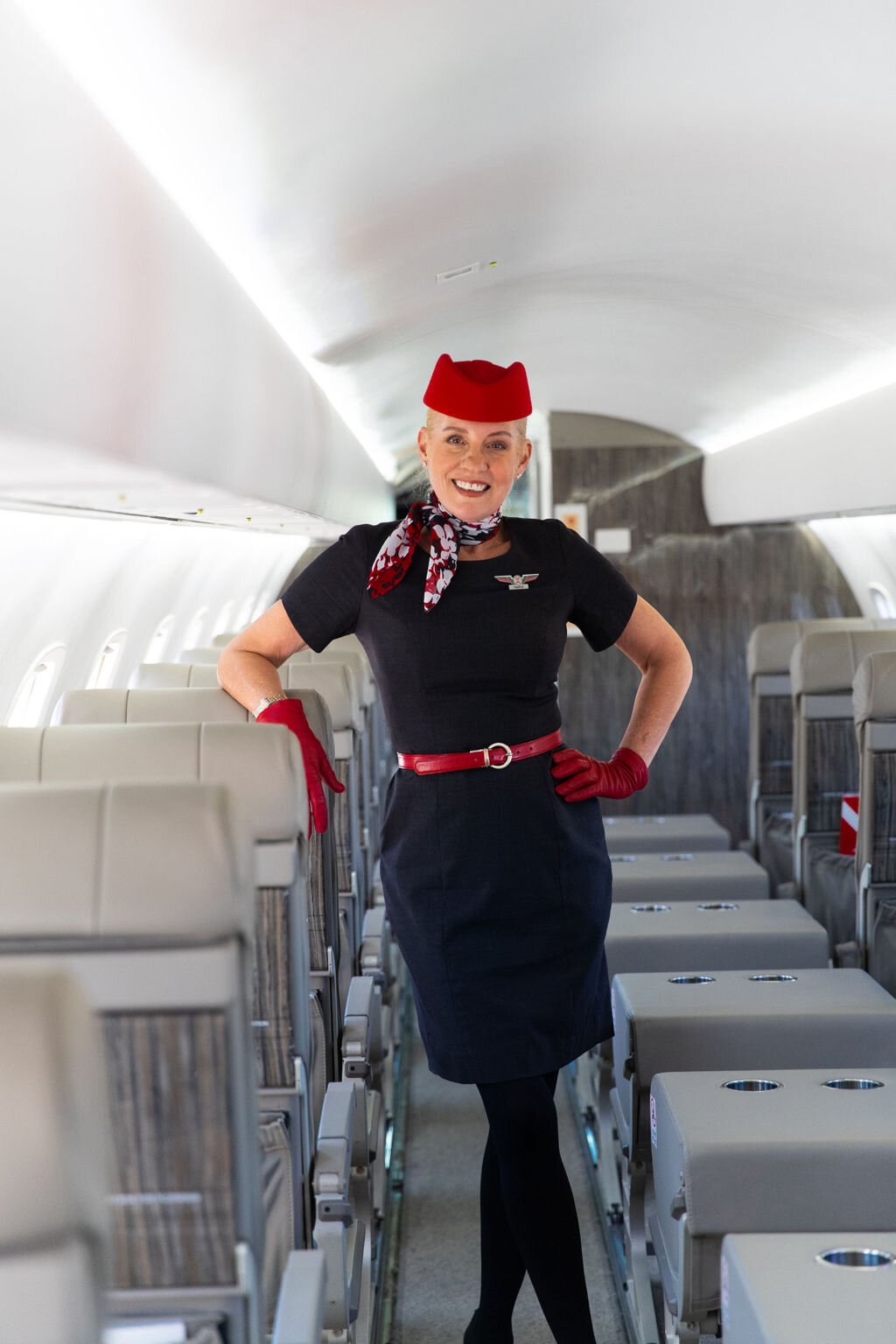FASHION TAKES FLIGHT
Evolution of the Flight Attendant Uniform
On view until October 31
1930s
The first female flight attendant, Ellen Church, was a 25- year-old registered nurse who began working for Boeing Air Transport in 1930. Early flight attendants were all registered nurses and wore their nurse uniforms in the air to convey authority and relieve passengers’ fear of flying. Their uniforms were made of heavy, durable material in military-style and included large caps that covered their ears, capes, and skirts that fell below the knee.
1940s
During World War II, extra fabric was being used to make military uniforms, so hostess uniforms did away with pleats and designed more figure fitting garments to save material. They no longer wore capes, and tailored blazers, pencil skirts, hats, and small-heeled shoes in muted colors were in style. The women were required to wear heels unless in the air, when they could wear flats, and they wore girdles underneath their skirts to appear smooth.
1950s-1960s
By the 1950s and 1960s, commercial travel was becoming an attainable luxury for the middle class. Classic suits with tea length skirts, white gloves, and pillbox hats were intended to match the well-attired passengers. The airlines began using famous designers like Christian Dior and Oleg Cassini, Jackie Kennedy’s personal designer, to design their uniforms. The term “stewardess” became a marketing technique used by the airlines, and advertisements portrayed them as doting housewives-to-be. They knew the latest fashion trends, wore designer uniforms, applied their makeup like experts, and lived a jet setting lifestyle. The women had to be in their 20s, single with no children, be between 5’ and 5’9”, less than 135 lbs, have a college degree, pass a personality test, and follow strict rules regarding hair and makeup.
Everything changed in 1965 when Braniff International Airways hired Emilio Pucci to design new uniforms. Pucci created the “Air Strip” design of layers to be removed during flight. Dubbed the “Gemini IV” collection, the uniforms included multi-colored smocks, space helmets, and tall boots. The airlines wanted to identify with the social and technological movements of the 1960s, and the image of the stewardess moved away from soon-to-be-wife to flirty hostess. The mid-1960s sexual revolution meant that hemlines crept higher up the thigh, and girdles and gloves were tossed aside in favor of drip-dry and easycare garments.
Southwest Airlines’ flight hostesses began wearing go-go boots and belted miniskirts in 1968. They branded themselves as the “love airline” serving “love bites” and “love potions.” Stewardesses were used by the airlines to appeal to the largely male clientele and lure businessmen away from train and car travel and onto flights with cheaper rates and services. The image shifted from housewife-to-be to playmate in the sky available to entertain.
Title VII of the 1964 Civil Rights Act began to change the face of the airlines as well. After lawsuits were filed in the late 1960s, women were given more protections and began to protest against the former height and weight requirements. Uniforms began to reflect a more well-rounded approach to age and size and included male flight attendants. By 1963, stewardesses at American Airlines also began speaking out against the airline’s policy of forcing their retirement at age 32.
1970s
The early 1970s welcomed bright colors, psychedelic patterns, short skirts, and go-go boots. Pan Am designed its first above-the-knee hemline and bold color choices of Superjet Blue or Galaxy Gold, and Delta offered its first uniform with pants in 1970.
1980s-1990s
In the 1980s and 1990s, uniforms included oversized ties and shoulder pads and were designed with style and functionality in mind. Delta created its first uniform that included maternity wear in the 1980s. The flight attendant image shifted from Playboy Bunny to safety professional, and uniforms became androgynous pantsuits and blouses. The glamor of air travel was gone as flight attendants had to provide quicker service to an increasing number of passengers.
2000s to Present Day
In 2012, Virgin America partnered with Banana Republic to bring back the style of the “golden age of travel” and a fashion-forward crew, and in 2016, Cole Haan and Zac Posen designed uniforms for American Airlines and Delta respectively. The uniforms were designed with style and functionality in mind and looked to the future.






